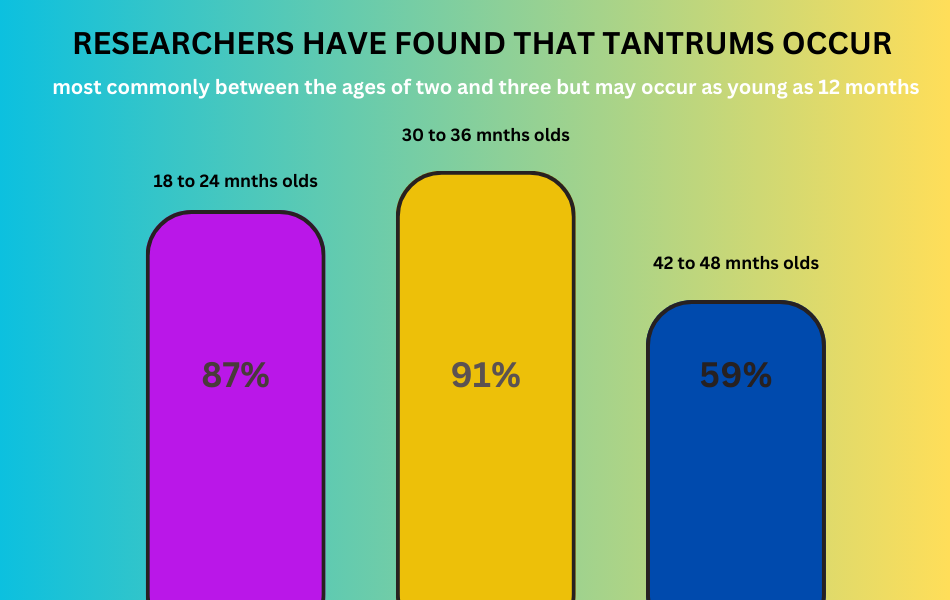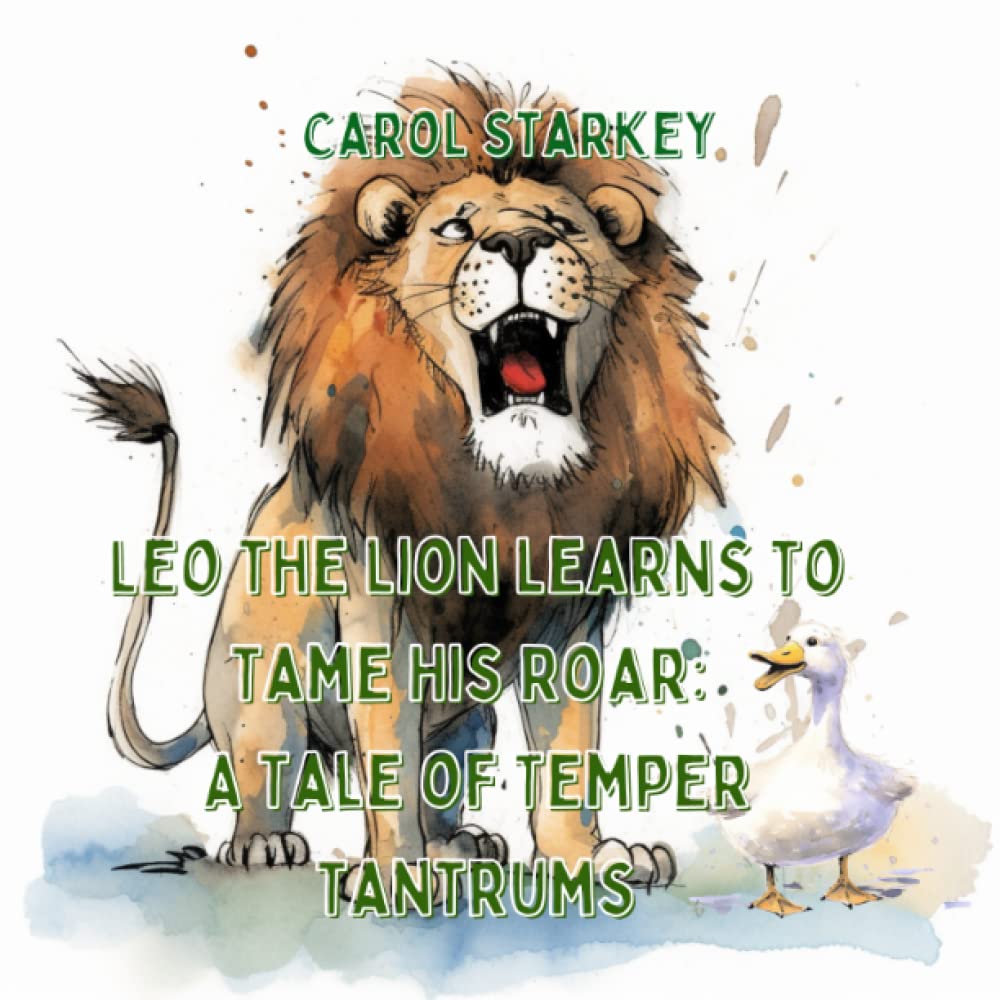Understanding the core components of a temper tantrum is crucial for seeking effective strategies to manage and support children in these challenging moments.
Temper tantrums are emotional outbursts often exhibited by children, characterized by intense, uncontrollable frustration and anger. These episodes typically involve crying, screaming, and sometimes physical actions like kicking or hitting. Understanding the core components of a temper tantrum is crucial for parents seeking effective strategies to manage and support their children through these challenging moments. This blog is under the category of Different Emotions.
Common Misconceptions

Despite being a common aspect of childhood development, temper tantrums are surrounded by various misconceptions. It’s vital to dispel these myths to foster a more accurate understanding. For instance, tantrums are not always indicative of poor parenting or a “spoiled” child; they are a normal part of emotional development. By addressing misconceptions, we can approach temper tantrums with empathy and implement more effective strategies for resolution and prevention.
Importance of Addressing Temper Tantrums

Recognizing and addressing temper tantrums in children is not merely about diffusing a challenging moment—it significantly influences a child’s emotional and social development. Properly managed tantrums contribute to the cultivation of emotional intelligence, resilience, and effective communication skills.
Moreover, the significance extends beyond childhood. Unchecked temper tantrums in early years can potentially manifest as problematic behavior in adulthood. Adults who haven’t learned healthy emotional regulation strategies during childhood might struggle with managing stress, conflicts, and relationships. By understanding the importance of addressing temper tantrums early on, we empower both children and their future adult selves to navigate emotions more effectively, fostering a foundation for positive mental health and well-being.
Understanding Temper Tantrums
A. Developmental Perspective

Age-Appropriate Behavior
Temper tantrums are often a normal part of a child’s development, particularly in the toddler and preschool years. Young children may lack the language skills to express their needs and frustrations adequately. As a result, tantrums serve as a non-verbal outlet for the overwhelming emotions they experience. Recognizing these outbursts as age-appropriate behavior helps parents approach them with patience and understanding, acknowledging that they are a phase that, with proper guidance, can be navigated successfully.
Emotional Regulation in Children
Emotional regulation, the ability to manage and express emotions appropriately, is a skill that evolves gradually in children. Tantrums can be seen as a natural consequence of this ongoing development. Understanding the age-specific challenges in emotional regulation aids parents in tailoring their responses to support their child’s growth. By nurturing emotional intelligence, parents and caregivers can assist children in developing coping mechanisms and a better understanding of their feelings, reducing the frequency and intensity of tantrums over time.
B. Triggers and Underlying Causes

Environmental Factors
Temper tantrums can be influenced by the child’s surroundings. Overstimulation, changes in routine, or unfamiliar environments may trigger heightened emotions. Understanding how external factors contribute to tantrums enables parents to create supportive environments. Consistent routines and gradual exposure to new experiences can help minimize environmental triggers, fostering a more stable emotional state in children.
Emotional Factors
Internal emotions play a significant role in tantrum occurrence. Children, especially in their early years, may struggle to articulate complex emotions, leading to frustration. Identifying emotional triggers, such as disappointment, fear, or anxiety, empowers parents to address the root cause. Teaching children emotional vocabulary and coping strategies provides them with tools to express and manage their feelings constructively, reducing the likelihood of tantrums.
Communication Challenges
Limited communication skills can contribute to tantrums as children find it challenging to convey their needs or frustrations verbally. Recognizing the connection between communication challenges and tantrums prompts parents to focus on enhancing language development. Encouraging speech, active listening, and employing alternative communication methods (such as gestures or pictures) can bridge the gap, enabling children to express themselves more effectively and reducing reliance on tantrums as a means of communication.
The Research and Insights
A. Studies on Temper Tantrums

Prevalence and Frequency
Research studies consistently highlight the prevalence and frequency of temper tantrums in early childhood. Understanding the commonality of tantrums reassures parents that they are a typical aspect of child development rather than isolated incidents. By delving into prevalence rates across different age groups, researchers provide valuable insights into the normalcy of tantrums during specific developmental stages. This knowledge helps parents contextualize their child’s behavior within a broader understanding of typical childhood experiences.
Long-Term Implications
Longitudinal studies offer critical insights into the potential long-term implications of unaddressed temper tantrums. Research suggests that children who consistently experience difficulties in emotional regulation may face challenges in later stages of development, including academic and social domains. By examining these long-term consequences, parents gain motivation to invest in effective strategies for managing tantrums during early childhood. This proactive approach can positively impact a child’s overall well-being and future success, emphasizing the importance of early intervention and support.
B. Expert Opinions

Psychologists and Child Development Experts
Psychologists and child development experts play a pivotal role in shaping our understanding of temper tantrums. According to Dr. Jane Nelsen, a renowned child psychologist and author of “Positive Discipline,” “tantrums can be viewed as opportunities for learning and growth rather than mere behavioral challenges”. Experts emphasize the importance of empathetic responses and teaching emotional intelligence to help children navigate these tumultuous moments successfully. Dr. John Gottman, a leading researcher on emotional intelligence, emphasizes the role of parents in creating an emotionally supportive environment.
Pediatricians’ Perspectives
Pediatricians offer valuable insights into the physical and emotional well-being of children. Dr. Tanya Altmann, a pediatrician and author of “What to Feed Your Baby,” stresses the need for parents to be attuned to their child’s unique temperament and developmental stage. By incorporating pediatricians’ perspectives, parents can gain a holistic understanding of temper tantrums, considering both psychological and physiological aspects.
References:
- Nelsen, J. (2006). Positive Discipline. Ballantine Books.
- Gottman, J. M., & DeClaire, J. (1998). Raising an Emotionally Intelligent Child. Simon & Schuster.
- Altmann, T. (2016). What to Feed Your Baby. HarperCollins.
Foundations of Temper Tantrum Management
A. Positive Parenting

Building a Strong Parent-Child Relationship
Building a strong parent-child relationship forms the bedrock of effective temper tantrum management. Quality time spent together fosters a sense of security and trust, making it easier for children to turn to their parents during moments of distress. Engage in activities that strengthen the bond, such as reading together, playing games, or having regular one-on-one conversations. For instance, having a bedtime routine where you share stories or discuss the day’s events creates a positive association with parental interactions.
Setting Realistic Expectations
Positive parenting involves setting realistic expectations for your child’s behavior based on their age and developmental stage. Understanding what is developmentally appropriate helps parents avoid unnecessary frustration. For example, expecting a toddler to sit quietly for an extended period is unrealistic, whereas praising them for short periods of focused play is more achievable. By aligning expectations with a child’s capabilities, parents create an environment where children feel encouraged rather than constantly falling short.
Example:
| Instead of expecting a preschooler to clean up their toys independently, parents can turn it into a fun, interactive activity by making it a game or a challenge. This not only manages expectations but also transforms potentially challenging situations into positive experiences. |
B. Effective Communication

Teaching Emotional Expression
Teaching children to express their emotions verbally is a crucial aspect of temper tantrum management. For younger children who may struggle with articulating their feelings, parents can introduce simple emotional vocabulary. For instance, during a calm moment, parents can say, “It’s okay to feel mad or sad sometimes. Can you show me your ‘mad’ face?” This encourages the child to associate words with their emotions, providing them with a constructive way to communicate when those feelings arise.
Encouraging Verbal Communication
Encouraging verbal communication involves creating an open space for children to express themselves verbally. When a child is upset, parents can prompt them to use words to describe what they are feeling. For example, saying, “I can see that something is bothering you. Can you tell me what happened?” This not only helps in understanding the trigger but also empowers the child to communicate their emotions, reducing the likelihood of resorting to tantrums as a means of expression.
Example Explanation
| Suppose a toddler is visibly upset after a playdate. In a teaching moment for emotional expression, a parent might say, “I can see you’re feeling upset. It’s okay to feel that way. Can you show me your sad face?” By associating the emotion with a facial expression, the child begins to connect the feeling with a tangible expression, laying the groundwork for future verbal communication about emotions. In encouraging verbal communication, if the child is having trouble expressing the issue, the parent could gently ask, “Can you use your words to tell me what happened? Did something upset you during the playdate?” This not only prompts the child to communicate but also reinforces the idea that expressing feelings through words is a positive and effective way to navigate emotions. |
These communication strategies contribute to a child’s emotional development and provide them with tools to manage their feelings, reducing the reliance on tantrums as a primary mode of communication.
Practical Applications for Parents
A. Recognizing Early Signs

Identifying Triggers
Recognizing early signs of temper tantrums involves identifying specific triggers that may precede an outburst. Triggers can vary from hunger and fatigue to changes in routine or unmet expectations. For example, if a child consistently has tantrums before bedtime, it might indicate fatigue as a trigger. By keeping a tantrum journal and noting the circumstances surrounding each episode, parents can identify patterns and proactively address or mitigate triggers.
Understanding Non-Verbal Cues
Children often communicate their distress through non-verbal cues before a full-blown tantrum occurs. Understanding these cues enables parents to intervene early. For instance, a child might start to fidget, clench their fists, or display a specific facial expression when feeling upset. By observing and recognizing these non-verbal signals, parents can engage in preemptive measures, such as offering comfort or redirecting attention, to prevent the escalation of a tantrum.
Example
| Imagine a toddler who consistently has tantrums when transitioning from playtime to bedtime. Through observation, a parent notices that the child tends to rub their eyes and become increasingly restless during the hour leading up to bedtime. Identifying this pattern allows the parent to initiate the bedtime routine a bit earlier, ensuring a smoother transition and minimizing the likelihood of a tantrum. In terms of non-verbal cues, suppose a preschooler is playing with a group of friends and starts to exhibit signs of frustration, like stomping their feet or crossing their arms. Recognizing these cues, a parent can approach the child and gently ask if something is bothering them, providing an opportunity for the child to express their feelings before a tantrum occurs. |
By proactively recognizing early signs, parents can implement targeted strategies to address triggers and support their child’s emotional well-being, fostering a more harmonious parent-child relationship.
B. Immediate Strategies During a Tantrum

Remaining Calm as a Parent
One of the most effective immediate strategies during a tantrum is for the parent to remain calm. A child’s tantrum can be emotionally challenging for parents, but maintaining composure is crucial. Taking deep breaths and staying composed models emotional regulation for the child. This not only prevents the situation from escalating but also communicates to the child that their emotions are manageable. Calmness allows the parent to think more clearly and respond in a way that is constructive rather than reactive.
Redirecting Attention
Redirecting a child’s attention during a tantrum is a powerful technique to shift their focus away from the source of frustration. Introducing a new activity or object can serve as a distraction and help the child disengage from the emotional intensity. For example, if a child is upset because a favorite toy is unavailable, a parent might suggest a different, equally engaging activity or offer an alternative toy. Redirecting attention not only diffuses the immediate situation but also teaches the child to cope with disappointment and adapt to changing circumstances.
Providing Comfort and Reassurance
Comfort and reassurance play a crucial role in helping a child navigate the intense emotions associated with a tantrum. Physical touch, such as a hug or holding the child’s hand, communicates a sense of security. Verbal reassurance, such as saying, “I understand you’re upset, and I’m here for you,” acknowledges the child’s emotions and reinforces the parent’s support. Providing comfort during a tantrum helps the child feel understood and valued, fostering a sense of emotional safety.
Example
| If a preschooler is having a tantrum because they wanted a particular snack, a parent might remain calm, and then redirect attention by suggesting they choose a different snack from the options available. Simultaneously, the parent could provide comfort by acknowledging the child’s disappointment, saying, “I see that you really wanted that snack. It’s okay to feel upset. Let’s find another yummy snack together.” |
C. Long-Term Strategies for Prevention

Teaching Problem-Solving Skills
Long-term prevention of temper tantrums involves equipping children with problem-solving skills. Teaching children how to identify challenges, explore possible solutions, and make decisions fosters autonomy and resilience. For example, if a child frequently has tantrums when sharing toys with siblings, parents can guide them through problem-solving by discussing ways to take turns or find compromises. This skill empowers children to navigate challenges independently, reducing the likelihood of tantrums stemming from frustration.
Consistent Routines and Predictability
Establishing consistent routines and predictability in a child’s daily life provides a sense of security and reduces anxiety, contributing to long-term tantrum prevention. Children thrive on routines as they provide a structured framework for their day. Consistent meal times, bedtimes, and playtime routines create a predictable environment where children know what to expect. Predictability minimizes surprises and helps children feel more in control of their surroundings, decreasing the likelihood of tantrums triggered by uncertainty.
Example
| Consider a school-aged child who often has tantrums when it’s time to leave for school. To teach problem-solving skills, a parent could engage the child in finding solutions, such as preparing belongings the night before or creating a morning routine chart. Over time, the child learns to proactively address the challenges associated with the morning routine, reducing the occurrence of tantrums. In terms of consistent routines, a preschooler may have fewer tantrums during transitions if there’s a predictable routine for getting ready for bed. This could involve a sequence of activities like brushing teeth, reading a bedtime story, and turning off the lights at the same time each night, providing a structured and calming routine. |
By incorporating these long-term strategies, parents contribute to the development of essential life skills and create a stable, supportive environment that minimizes the triggers for temper tantrums.
Seeking Professional Help

When to Consult a Pediatrician
Knowing when to consult a pediatrician is crucial for parents navigating temper tantrums. If a child’s tantrums are unusually frequent, intense, or accompanied by other concerning behaviors, seeking professional guidance is recommended. Pediatricians can assess whether there are underlying medical issues, developmental concerns, or behavioral factors contributing to the tantrums.
Additionally, persistent sleep disturbances, changes in eating habits, or delays in reaching developmental milestones may warrant a pediatrician’s attention. Regular check-ups provide opportunities for parents to discuss their child’s behavior and receive tailored advice.
The Role of Child Psychologists
Child psychologists, like Little Otter, play a pivotal role in understanding and addressing the emotional and behavioral aspects of temper tantrums. When tantrums persist or escalate, a child psychologist can conduct a thorough assessment to identify potential underlying issues. They may explore emotional regulation skills, social interactions, and family dynamics to formulate effective intervention strategies.
Child psychologists work collaboratively with parents to implement behavior management techniques, enhance communication within the family, and support the child’s overall well-being. Seeking the expertise of a child psychologist can provide valuable insights and personalized strategies for managing temper tantrums.
Support Groups for Parents
Parenting can be challenging, especially when dealing with temper tantrums, and joining support groups, such as My Strong Willed Child can be immensely beneficial. These groups create a space for parents to share experiences, exchange practical advice, and receive emotional support.
Online forums, community groups, or organized parenting classes facilitate connections with other parents facing similar challenges. In these supportive environments, parents can gain insights into effective strategies, learn from others’ experiences, and develop a sense of camaraderie. Support groups contribute to a holistic approach to managing temper tantrums by addressing both the child’s behavior and the parent’s well-being.
Recommended Child’s Illustrated Book from Amazon

Leo the Lion Learns to Tame His Roar: A Tale of Temper Tantrums
| Introducing “Leo the Lion Learns to Tame His Roar: A Tale of Temper Tantrums” – a captivating and heartwarming storybook that takes young readers on an adventure of self-discovery and emotional growth. In this enchanting tale, children will meet Leo, a lion with a mighty roar, who learns to navigate the challenges of temper tantrums with the help of a wise and gentle duck named Daphne. Through Leo’s journey, children will explore common emotions associated with tantrums, such as frustration, anger, and impatience, and discover valuable strategies for managing and expressing these feelings in healthy ways. Written with empathy and understanding, this beautifully illustrated story invites children and their caregivers to engage in open conversations about emotions, self-regulation, and empathy. Each chapter unfolds rhythmically, capturing the essence of Leo’s experiences and guiding readers through a series of relatable scenarios. “Leo the Lion Learns to Tame His Roar” is more than just a storybook – it’s a tool for emotional empowerment. With gentle guidance and practical lessons, children will learn deep breathing techniques, find positive outlets for their emotions, and explore the power of rational thinking and patience. Through Leo’s transformation, young readers will be inspired to embrace their own emotional journeys and develop lifelong skills for emotional well-being. This engaging and thoughtful storybook is ideal for children aged 4 to 6, as well as their parents, caregivers, and educators. It serves as a valuable resource for nurturing emotional intelligence, fostering resilience, and promoting healthy emotional expression. Join Leo and Daphne on their transformative adventure today. Let “Leo the Lion Learns to Tame His Roar” be a cherished addition to your library, providing a foundation for understanding emotions and empowering children to navigate the world with empathy and self-awareness. |
Conclusion
In conclusion, understanding and managing temper tantrums requires a multifaceted approach. Armed with insights from research, expert opinions, and practical applications, parents can navigate these challenging moments with empathy and effective strategies. Long-term prevention, immediate interventions, and seeking professional help collectively contribute to fostering a resilient, emotionally healthy child.
Recent Posts
Discover how different parenting styles influence your child’s emotional growth and learn practical strategies to help them regulate emotions effectively. The way you parent today could shape...
Break the Cycle: Heal to Truly Support Your Children. Learn how childhood emotional neglect or abuse shapes parenting, and how to create lasting change. I’m writing this blog from personal...

